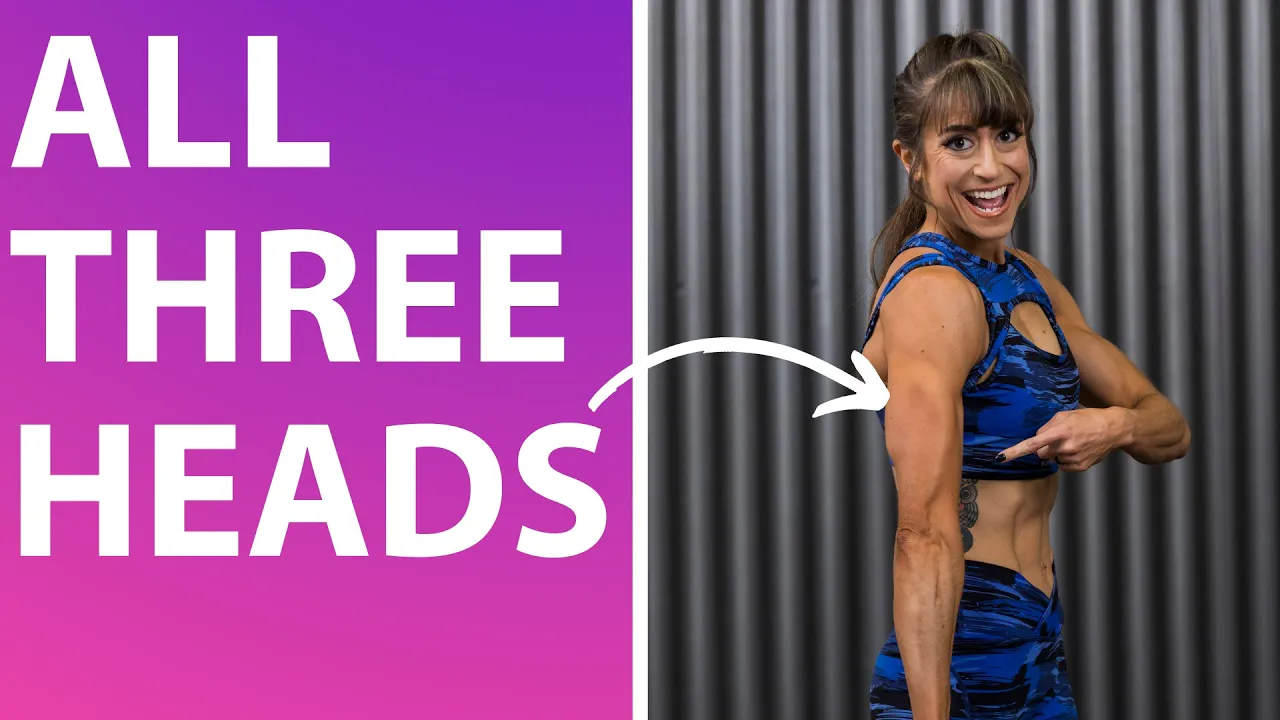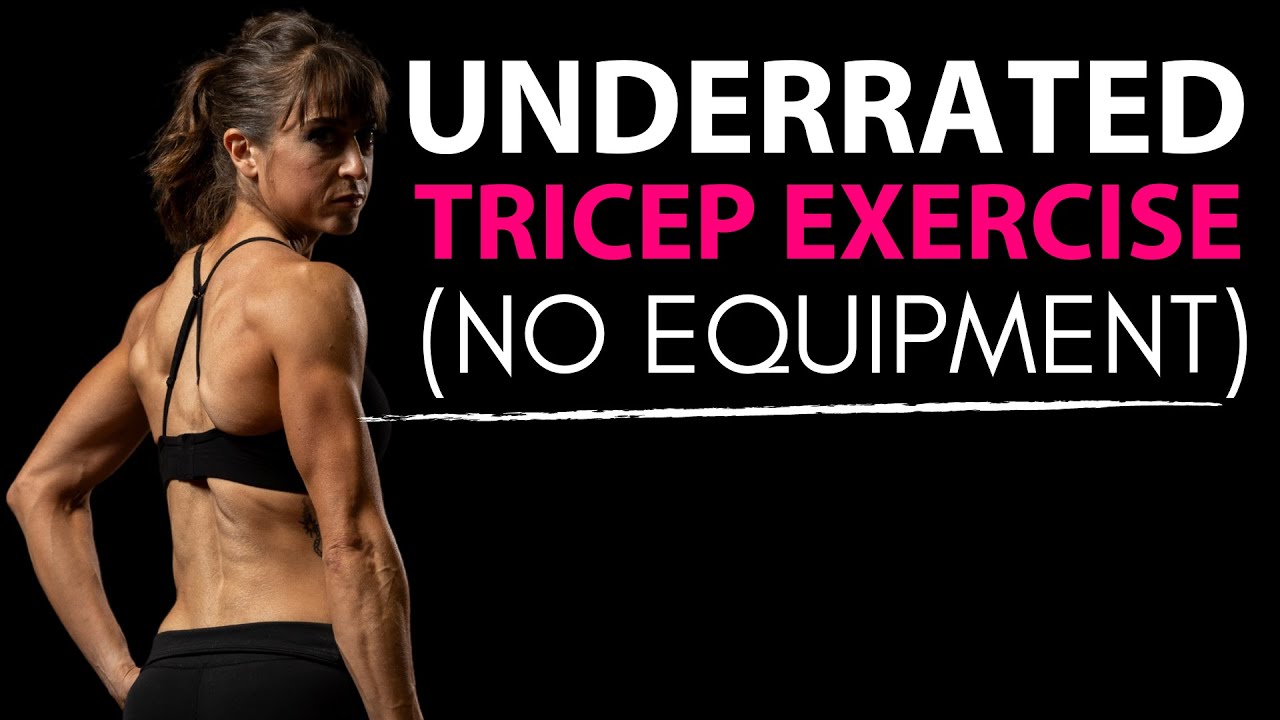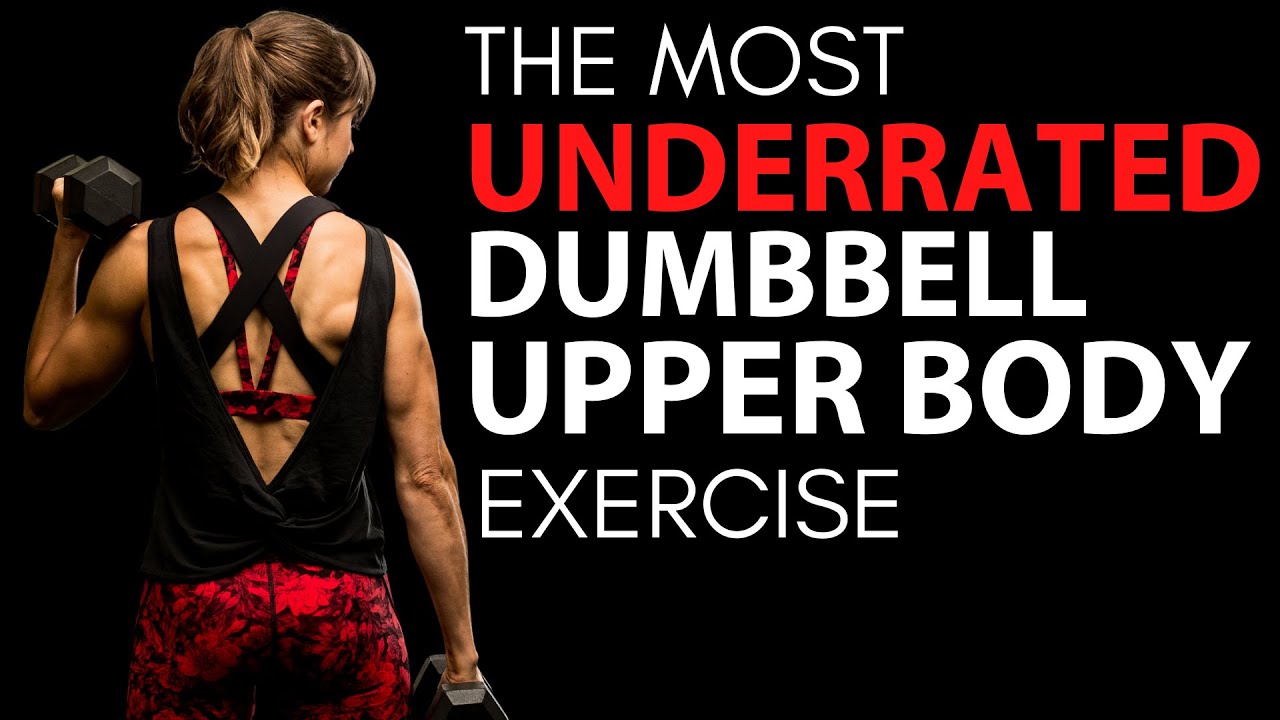
The Best Dumbbell Tricep Exercise (TO HIT ALL 3 HEADS)
Postures and specific positions of joints during exercises can have more of an impact in what is working than we realize.
It can help us target different aspects or heads of a muscle to get the best muscle hypertrophy results while achieving aesthetic balance.
It can also help us be functional stronger and prevent imbalances, improving our joint stability and ability to recruit muscles more efficiently and effectively.
That’s why I wanted to discuss one of my favorite moves to work those triceps and target all three heads.
But first I do just want to discuss what the triceps do to highlight while including a variety of different moves for muscle groups can be key!
The 3 Tricep Heads:
The tricep muscle group is comprised of 3 heads:
– The Long Head
– The Lateral Head
– The Medial Head
All three heads work together to power elbow extension.
However, the long head of the tricep also impacts our shoulder stability and function because it crosses over the shoulder joint and attaches to the scapula.
It also can then assist in shoulder extension which is why you may have felt your triceps some during moves like lat push downs!
But because the tricep muscle group does contribute to actions at both of these joints, you want to account for this when selecting moves – whether you want to try to target one head more than the other or work all at the same time!
Because I think it is key we’re able to train efficiently, even when we are short on time, I wanted to share a great move to target all 3 heads of the tricep in one exercise.
This amazing move to hit all three heads is the Narrow Grip Press To Overhead Tricep Extension.
Why You Should Use The Narrow Grip Press To Overhead Tricep Extension:
The Narrow Grip Press To Overhead Tricep Extension is a great hybrid exercise that combines that close grip bench press with an overhead tricep extension.
The chest press involves the triceps in elbow extension.
But it doesn’t activate the long head as much as overhead tricep exercises do.
That’s why combining the chest press with the overhead tricep extension can be so key.
That shoulder flexion puts the long head under more of a stretch to work it and you’ll even feel it as you pull back forward from that shoulder flexed state to perform the chest press.
And while you can of course do overhead tricep work standing, many of us tend to compensate due to a lack of thoracic mobility, arching and overloading our lower backs or really feeling our necks.
By performing this overhead extension lying down, it can be a bit easier on our shoulders and even prevent us from engaging our lower back to seek out mobility we don’t have in our thoracic spine.
You can use the bench as support and a guide for that overhead extension.
But the combination of these two movements is a great way to efficiently hit all three heads while even working your chest and shoulders.
So…How Do You Do The Narrow Grip Press To Overhead Tricep Extension:
To do this exercise, lie on a bench with a dumbbell in each hand and a neutral grip or palms facing in toward your body.
Firmly plant your feet and brace your abs.
Keeping your elbows in by your body to target your triceps more, press the weights straight up from your chest.
Fully extend your elbows to press the weights up and even focus on that extra tricep squeeze at the top.
Then as you begin to lower the weights overhead, soften your elbows to lower the weights in an arch.
While you’re flexing at your shoulders to reach overhead you want to soften your elbows to just lower the weights beyond your head off the bench.
You don’t want this to turn into a skull crusher or you won’t get the extra stretch on the long head of your tricep.
But you also don’t want to turn this into a pull over where your arms are straight. You what that elbow flexion to reach just overhead.
Lower the weights toward the ground with that slight elbow flexion then focus on your triceps working to pull the weights back over your chest.
Pause as you fully straighten your elbows and flex your triceps before lowering the weights toward your chest.
Move at a controlled pace and really focus on feeling those triceps work.
Make sure you aren’t shrugging your shoulders as you go through the movement or allowing your arms to flare way out from your sides on the press.
Modifications and Variations:
If you don’t have a bench, this move can easily be done as a floor press while still reaching overhead.
You can also modify using a single dumbbell or kettlebell if you don’t have an appropriate set of weights. This can also help you focus on that narrower grip if you find you struggle with controlling the two weights.
An EZ bar is also an option to add loads as you feel ready, using the overhand grip, palms facing away and about shoulder-width apart. You still want that narrow grip to better activate the triceps, especially the long head.
But just be conscious of engaging your back to support your shoulders.
SUMMARY:
Remember, when selecting moves to include in our routines, we want to stay focused on our needs and goals. Every move we include should have a purpose.
It’s why sometimes doing the same but different, choosing moves that work muscles from different postures and positions can be key for progression. It isn’t just about add loads but about addressing every aspect of a muscle.
So if you want an efficient exercise to work all 3 heads of the tricep, this move is an amazing option whether you include it in a compound set after a heavier compound chest, shoulders and tricep movement, use it in a supplemental circuit or even include it as an arm finisher at the end of your workout!
Want workouts to match your needs and goals? Ready to see the muscle tone you want?
Learn more about my coaching:




